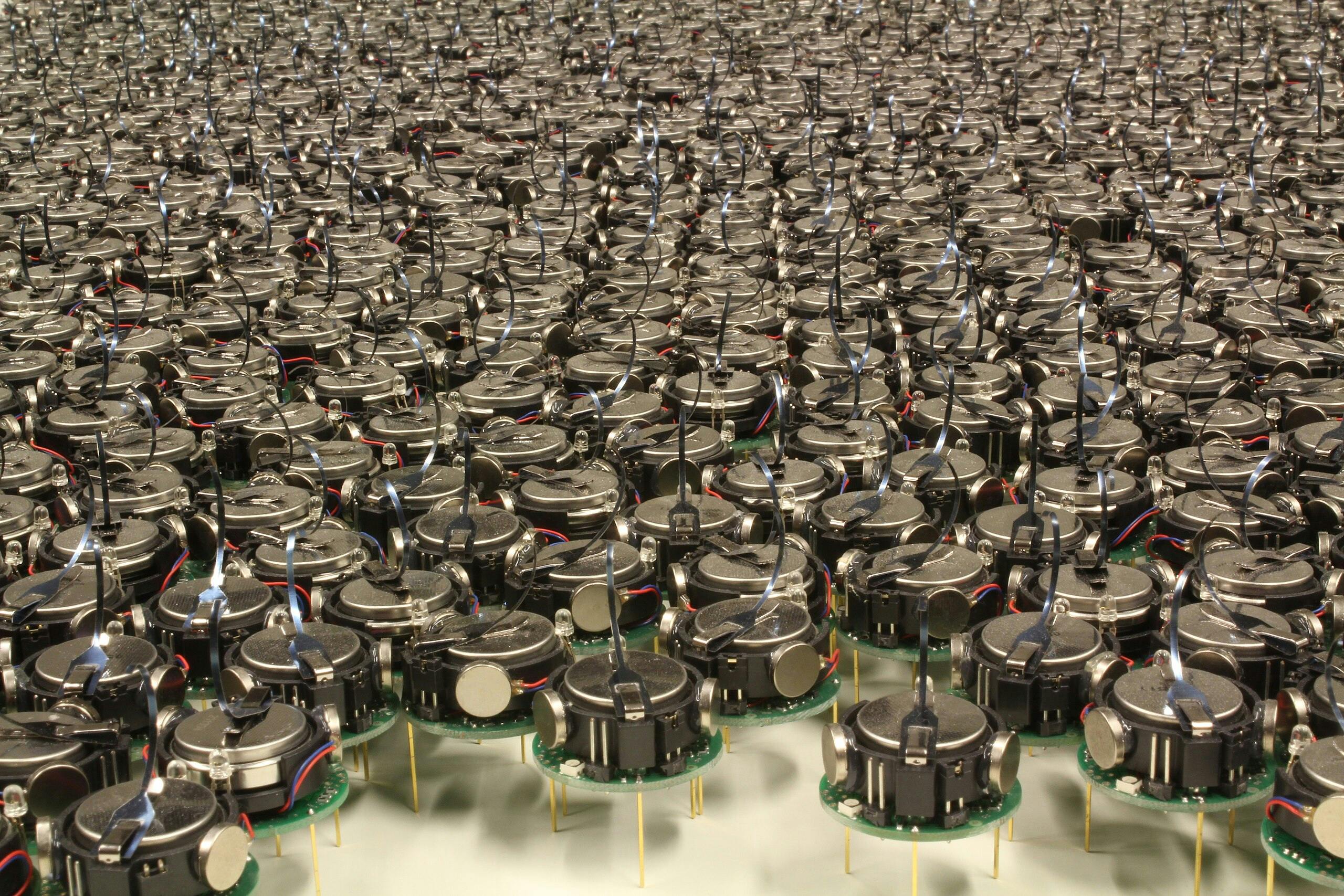The rapidly evolving field of robotics is continuously seeing numerous innovations, but one in particular stands out for its efficiency: swarm robotics. The burgeoning technology draws inspiration from ants, bees, and flocks of birds, whose collective behavior allows them to accomplish more complex tasks than an individual acting on its own would be capable of. Swarm robotics harnesses the power of many basic robots working together in the same manner to accomplish what one robot cannot.
The technology works by blending artificial intelligence with decentralized control systems and is about to revolutionize industries from disaster response to space exploration. Swarm robotics offers an exciting glimpse into the future where robot cooperation at scale will solve problems too vast for humans or single robots to accomplish alone.
In traditional robotics, a single, highly sophisticated machine performs complex tasks, but this is limiting. Swarm robotics allows the use of multiple robots that are small, inexpensive, and simple, and through local interaction with other robots, collectively exhibit sophisticated intelligence. This mimics the behavior of ant colonies, for instance, which build intricate nests.
However, swarm robotics only works if programmed through decentralization. Each robot operates autonomously using sensors, communication modules, and AI algorithms to make decisions based on its environment and interactions with other robots. This way, swarm robots are highly adaptable, scalable, and resilient. If one fails, there are plenty others to fill the gap.
What makes all this possible is the advancement of technology. A decade ago this might not have been possible but as scientists make new discoveries and solve more solutions, robotics take a leap forward. New AI algorithms and advances in microelectronics have made it possible to create smaller, cheaper robots without sacrificing functionality. By reducing costs, researchers can produce large swarms of robots, making them perfectly usable for environmental monitoring or disaster recovery.
Swarm behavior is also highly dependent on robots sharing information efficiently. Recent innovations in low-power, short-range communication technologies, such as Bluetooth Low Energy and ultra-wideband (UWB), allow robots to exchange data quickly while conserving energy.
By engaging in highly interactive group behavior, swarm robots will be able to operate in hazardous environments like earthquakes or wildfires where human intervention is too risky.
Swarm robotics is also proving useful in tracking environmental changes over large areas. In agriculture, swarms of small robots are able to monitor soil health, detect pests, or optimize irrigation, reducing the need for chemicals.
There are plenty of other uses for massive robot swarms. In marine environments, underwater robot swarms can monitor coral reefs and track pollution levels, providing important data for conservation efforts.
In space, robots can be used for exploration. NASA’s Jet Propulsion Laboratory is developing concepts for swarms of small spacecraft, or “CubeSats,” to explore distant planets or asteroids. NASA’s Ingenuity Mars Helicopter proved that spacecraft can fly on Earth’s closest neighbor. And that was just one. Imagine thousands of helicopters flying in unison across the Mars landscape, collecting data and providing scientists with images the Perseverance rover cannot. The decentralized nature of swarms reduces the risk of mission failure if one unit malfunctions, a critical advantage in space’s harsh conditions.
In manufacturing, swarms of robots can streamline logistics and assembly processes. For instance, Amazon is experimenting with swarms of small robots in its warehouses to transport goods, optimizing paths dynamically to avoid bottlenecks. These systems can scale up during peak demand, offering flexibility that traditional conveyor belts lack.
Of course new technology comes with unique hurdles and scientists are working to iron out the kinks. One major challenge is ensuring robust communication in complex environments. Interference, limited range, or power constraints are likely to disrupt coordination, especially in large swarms. Researchers are addressing this through hybrid communication systems that combine local and cloud-based processing.
Another issue is scalability. While small swarms are manageable, coordinating thousands of robots requires immense computational power and sophisticated algorithms. Current research is focused on developing lightweight AI models that can run on resource-constrained robots without sacrificing performance.
Assuming we can fix these issues, the future of swarm robotics points toward even greater integration with AI and other emerging technologies. What we are seeing today is just the tip of the iceberg, so to speak. As augmented reality and solar-powered robots become more sophisticated, and as AI continues to evolve, swarm technology will advance simultaneously.
By mimicking the birds and the bees, swarm technology is unlocking new possibilities in different ways. Now we are creating what we have always known: Each individual is unique and can accomplish even greater tasks when working as a collective.










